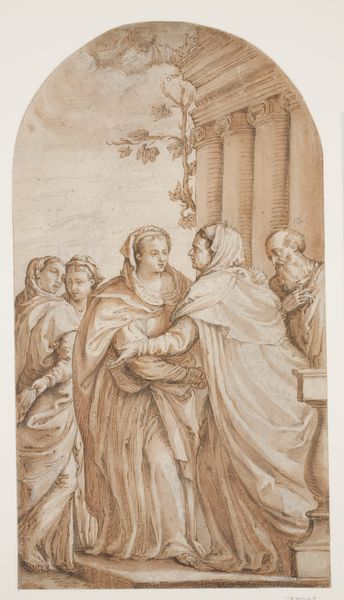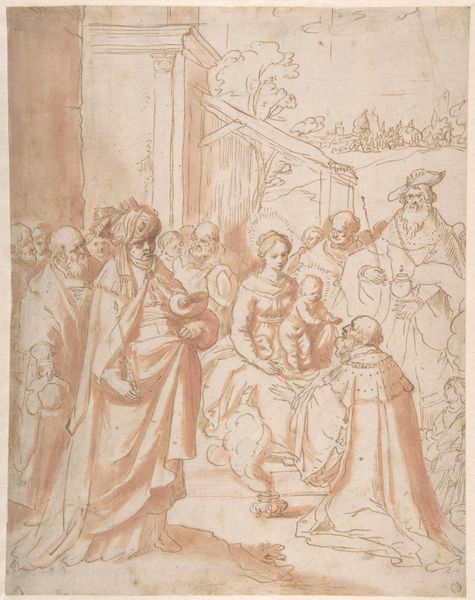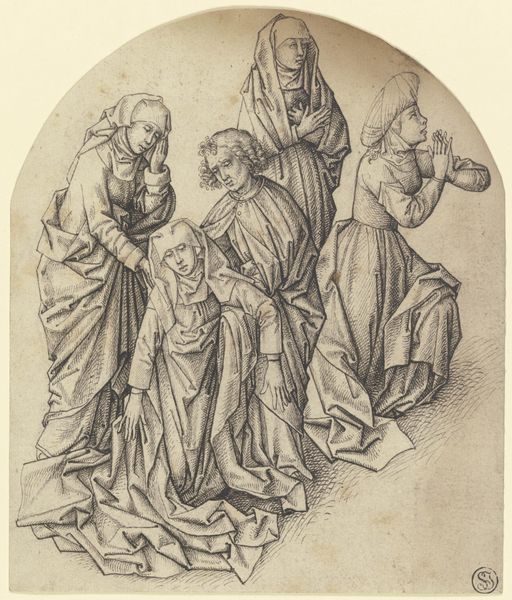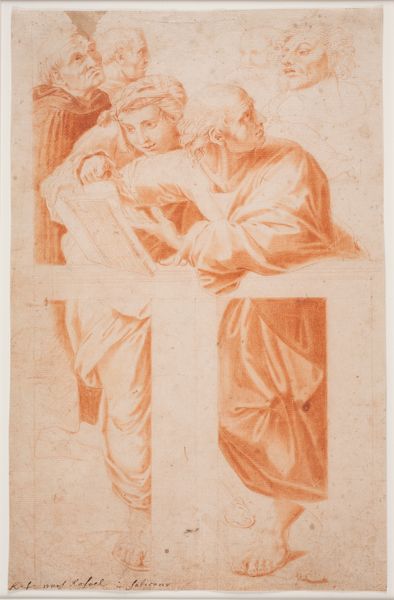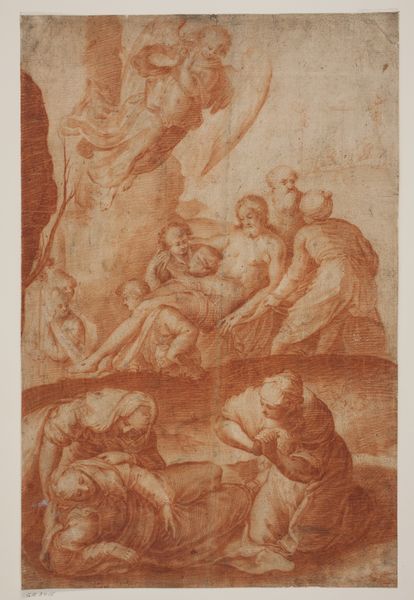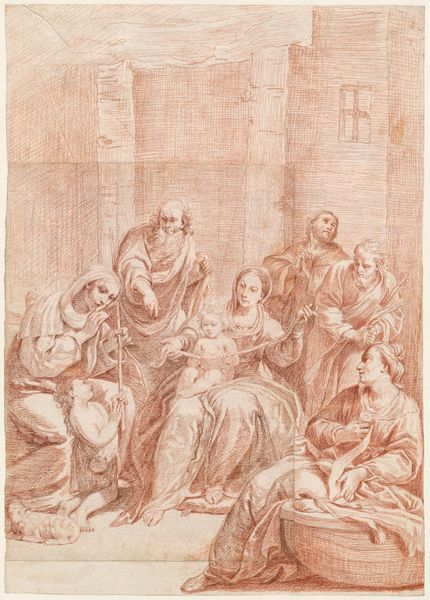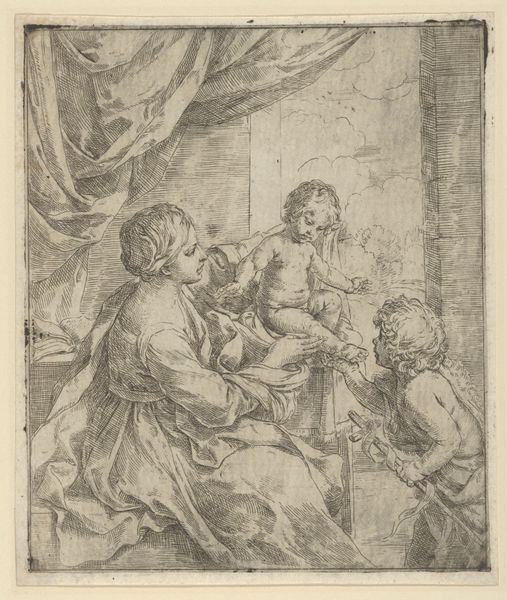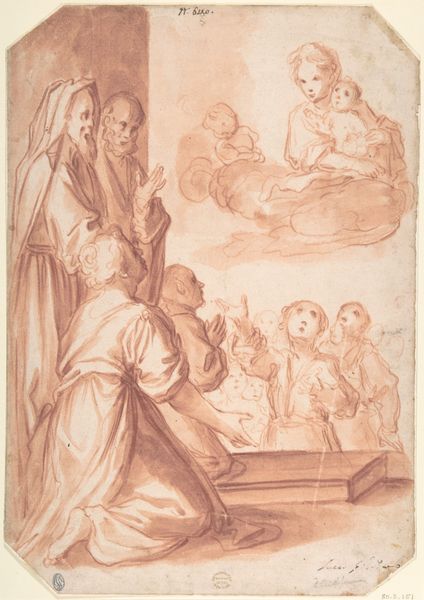
Studie efter Guido Renis freske i Cappella dell' Annunciazione, Palazzo Quirinale, Rom. (Marias fødsel, venstre side) 1671 - 1738
0:00
0:00
drawing, charcoal
#
drawing
#
baroque
#
charcoal drawing
#
figuration
#
charcoal
#
history-painting
#
italian-renaissance
Dimensions: 468 mm (height) x 417 mm (width) (bladmaal)
Curator: This is a study by Hendrik Krock, created sometime between 1671 and 1738. It is titled "Studie efter Guido Renis freske i Cappella dell' Annunciazione, Palazzo Quirinale, Rom. (Marias fødsel, venstre side)," which translates to "Study after Guido Reni's fresco in the Chapel of the Annunciation, Quirinal Palace, Rome. (The Birth of Mary, left side)". Editor: It strikes me immediately as a composition in gestures. A wash of umber and sienna tones depicts figures arranged in a careful choreography of attentiveness and care. The material, charcoal on paper, lends itself well to capturing these fleeting movements. Curator: Krock made this drawing as a study of the fresco "The Birth of Mary" by Guido Reni, which resides in the Quirinal Palace in Rome. The scene, of course, depicts the moments surrounding the birth of Mary, mother of Jesus. The figures represent the women who assisted in the birthing process, a traditionally female sphere, giving support, care and attendance to a miraculous moment. Editor: Absolutely, and note how Krock focuses on the dynamism created by the converging gazes and gestures. The light and shadow define forms but also guide our eyes across the composition. See how the tonal variations highlight specific areas and create a rhythmic reading of the figures’ interactions. Curator: Thinking about the figures within a historical context, we should consider the traditional roles ascribed to women, particularly concerning childbirth and domesticity. Krock's choice to replicate this specific segment of Reni's fresco arguably illuminates how women and female community have historically been integral to both everyday life and pivotal cultural and religious narratives. Editor: Yes, the lines vary between sharp definition and suggestive softness, giving each figure both solidity and a transient quality. This balance really enhances the sense of momentary action. Curator: I agree. Overall, what strikes me is how Krock engages with themes of community and femininity, drawing from the historical context of the depicted scene to inform our reading of a pivotal point of faith through a very human experience. Editor: And from my point of view, focusing on pure form, the harmonic placement of these figures demonstrates that visual storytelling can effectively distill profound human and spiritual connections.
Comments
No comments
Be the first to comment and join the conversation on the ultimate creative platform.
